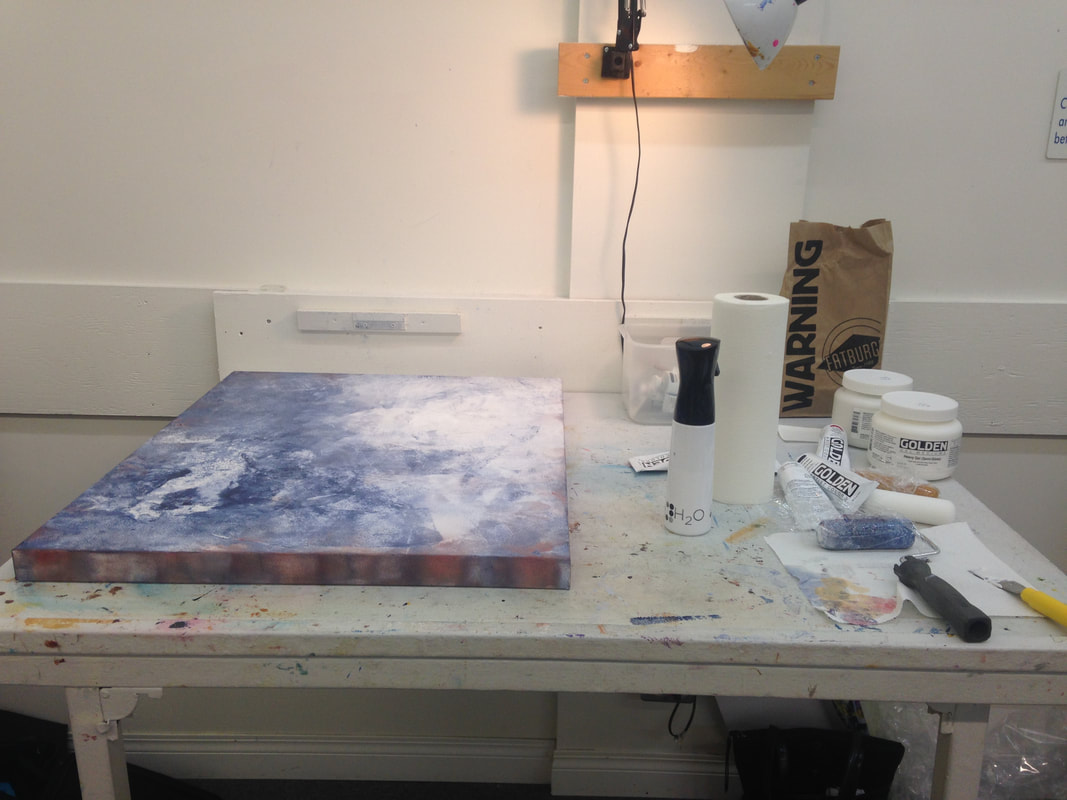|
Plaster is my super secret weapon of choice when it comes to texture building. In fact, it is so good and effective, that I have often been asked not to share this trade secret with my students (when I teach at some art stores), for fear that they would buy the plaster instead of the products at the art store. Plaster is a Hardware store product that I often use to replace Modeling/Molding Paste because it yields the same results for a fraction of the cost.
If you would like to know how I use plaster, read my blog post titled: Gel Medium VS Modeling Paste. Everything I say about Modeling Paste applies to plater as well. The one thing to keep in mind is that plaster is a product made to fill nail holes in the walls, not a canvas. Walls are an inflexible surface whereas canvases are a flexible surface. Any ideas as to what happens when we use plaster on a canvas? You guessed it. It’s a lot like painting on an elastic band. The plaster tends to crack. Personally, I do not consider this a bad thing as long as the plaster does not crack and fall off the canvas. We can prevent this from happening by mixing a 50/50 Plaster/Gel Medium mixture to make the paste more malleable. Also, keep in mind that anytime we use items than were not “meant” for the canvas, we open ourselves up to “funky” things happening on the canvas. Personally I find this a blessing, not a curse. In my experience, experimentation and making your own rules is a powerful way to make new discoveries. The choice is yours, either stick to the products the paint company has made for you, or invite the element of experimentation and surprise into your work. I highly suggest you chose the latter. Interestingly, Modeling Paste (which is an item created by the paint company) also cracks as it dries much like the plaster does. However, if you want to stick to the products the paint company has made for you, perhaps a product like Flexible Modeling Paste is a good choice because it yields less cracks. Modeling/Molding Paste comes in many viscosities including: Regular, Light, Hard, Flexible & Course. Having used all of these products, I still prefer either the regular Modeling paste or plaster. I find that with plaster, Gel Medium and a handful of sand/salt/sawdust, I can create my own DIY versions of all of these products. My personal favorite Hardware plaster products include: Spackling Paste by DAP. Watch out for this product: My least favorite plaster product is called Dry Dex Spackling: Goes On Pink! by DAP. You can imagine why this would be a fantastic choice when you are filling nail holes in the walls (because it indicates drying time by changing color). It's not so great when you are working with pink plaster and acrylic paint at the same time, because it's confusing. 3/28/2018 10:04:43 am
I like how you talked about how to keep in mind that plaster will create funky textures for art. My mom uses plaster in her art studio all the time. I appreciate the information on how to use plaster to create textured art. My wife is an artist and she had me buy some plaster for one of her art projects. I couldn't believe that plaster could be used for art projects, but after reading this article I was amazed how when the plaster dries it can warp the canvas to change the art piece itself. I am glad I now know why my wife had me grab plaster for her in the first place! Comments are closed.
|
This blog was created to share my belief that the art-making process is a catalyst for transformation and personal empowerment. I am living proof.
Categories
All
|
